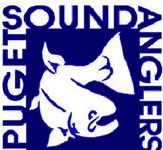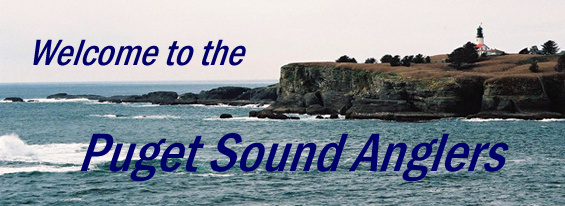|
fishing,
Estuary Chinook Salmon Rigging
11
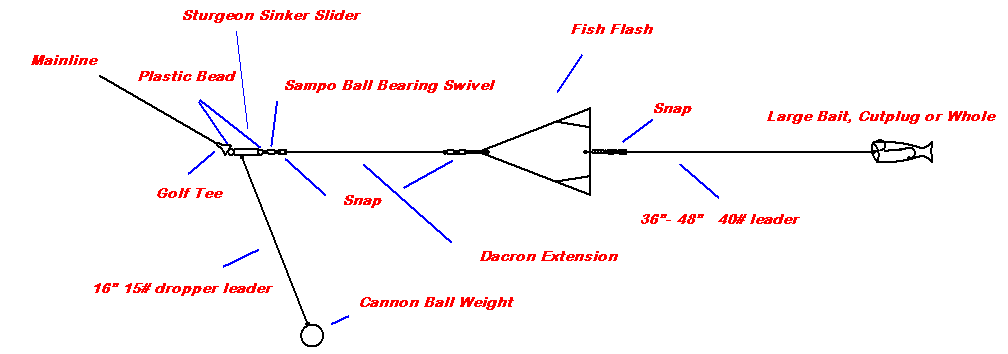 |
| Shown here
is an estuary salmon set-up that has been perfected for this type of
fishery |
Fishing Regulations & Charts
:
For most of us who do not remember like we used to, it may be beneficial to
carry a copy of your state's current Fishing Regs. on your boat.
There will be some location limits as to buoys or points of land for both the
lower & upper boundaries of the fishery. Also check with your
Dept of Wildlife either by looking at their internet site or a local sporting
goods store for updates as to an early closure or extended catch possibilities
in the specific areas.
Another thing to have aboard could be charts of the intended
estuaries. If you happen to be there when the tide is out, sometimes there
are sandbars where there was water when you went out.
| A
nice Chinook in the net |
Ready
to net one. Notice the array of small boats here with Tokeland in
the background |
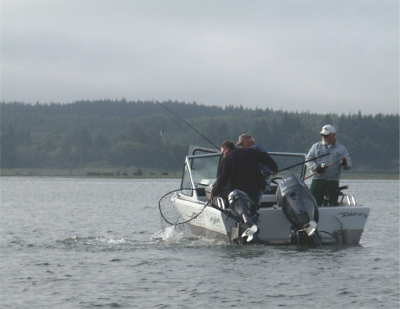 |
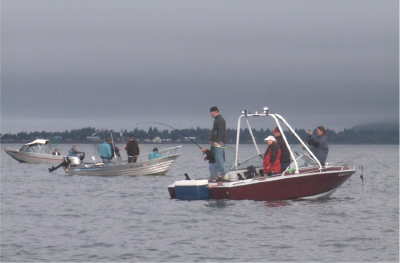 |
GPS :
This time of the year fog can be there all morning, or set in later & then
even a handheld GPS with your launch point & a few buoy locations will give
you some references that in addition to your depthfinder will allow you to at
least feel not as lost as you could be. If you stay on the shore
when the fog is in, your fish box will certainly be not have the fishy smell.
Each Estuary is Different:
With this being said, then it also applies that somewhat different methods need
to be used to be the most effective. Some estuaries will have different
water clarity & therefore your attractor needs to be consistent with the water
conditions. The murkier the water, the larger the attractor needs to be. Grays Harbor usually is rather
murky & this can even change with the tide, so use a larger attractor & possibly
a shorter leader behind it. Willapa Bay however seems to be a
lot clearer water & it has proven beneficial to use the Mini
Fish Flash or no attractor. The Columbia River at the Buoy 10 area has a lot of
tidal influence & ocean water exchange, so it can be fished very similar to the
ocean fishery. It usually has considerably less weeds also.
Time & Tides : Most of the catching
occurs from the last 2 hours of the incoming high tide and about 2 more hours
after the flood. However it can be worthwhile all the way thru the outgoing & into the low slack.
The thinking here is that
the fish will be swimming upstream into the out-flowing water, & not being
swept in by the incoming tide that seems to be the common perception. Trolling
is usually be best with the tide up until about low slack tide & then the troll becomes both
directions at tide change. On some shallow estuaries with a narrow river channel, on a low tide, the water area has shrunk considerably
and this then concentrates the fish in the channels or holes that are left which
can prove beneficial to the fisherperson.
However as with many fisheries, the fish sometimes
write their our timetables & they have been caught on any time of the
tide.
It also makes a difference if the weather is dry for some
time, or if it has been raining. If it has been dry, then the fish tend to
stack up in the bay waiting for a rain, waiting for a shot of fresher, cooler water.
When it starts to rain,
even slightly, they will move thru &
upriver rather rapidly.
Boats : In
this type of fishery you will see about any size & type of boat.
Most common will be 16' to 18'ers. You will see water ski boats,
river jet sleds, & ocean fishing cabin boats. If the weather
permits, & the wind does not blow, creating a lot of chop, even a 12' car-topper
can be used. The Columbia River Buoy 10 fishery would be an exception here
as the larger boats are needed. The wind usually picks up on all coastal
area in the afternoon
& even 18' or 20' open boats can take on water over the bow when it gets rough,
so watch the other boaters & be prepared to head in a little early if need be.
Gear :
You may see some downriggers in use, but with all the floating weeds at times it
seems to be more of a hassle & not really beneficial in this shallow
water. Plus if you get bound in a parade by many other boats, your maneuverability
is restricted. You may also see the use of some divers, probably by
fishermen that are more familiar with the Columbia River Buoy 10 fishery, but
estuaries that have bay grass prevalent, these weeds can cause a problem. When the floating weeds are
in/on the water, the divers seem to
gather LARGE gobs of weeds & it would be doubtful that they would trip IF a
fish would bite, & you can not trip them either.
You can use regular mooching gear to troll in these shallow waters, however
unless you use 8 or 10 ounce sinkers you will have a lot of line out & at
times the closeness to other boats, this may not be desired.
The set-up illustrated above has been perfected specifically for this type of fishing.
Another thing DO NOT use your rod holders set at a high angle where the
line enters the water far back. Again consider the close proximity of
other boaters. Plus the fact that most of these fish being larger than
normal and the shallow water have no place to go but away. If you are near
other fishing boats, someone may have to move fast to keep the tangles at a
minimum.
In some estuaries, the water may be slightly murky, so a attractant like the Fish Flash that has little
drag seems to work best. In the past, a red or chartreuse Fish Flash have proved
excellent, however there are new ones out that are glo-in-the-dark, these
should prove good when charged with a camera flash. My thought here
is that the size of this
attractor needs to match the water clarity. For Grays Harbor the large
Fish Flash works OK. The medium size in my opinion is best all
around one if you had to pick one, as I believe in this shallower or clearer water the
larger size could spook the fish. For the Willapa, I have even been
known to use the small or the mini
version.
Add a Sampo ball bearing swivel at the end of your mainline when using a Fish
Flash to help eliminate line twist. Also place a golf tee on the mainline
above all the other gear. This is to help divert floating grass off.
It has
been observed that a knot on the terminal end of the mainline seems to not allow
grass to pass off, whereas this golf tee seems to help in this respect.
Use a plastic sturgeon sinker slider on the mainline to attach the sinker onto.
This helps to prevent the fish to use the weight of the sinker to throw the barbless hooks, since the slider will slide if the fish tries to shake & dislodge the
hook. Attach a 12" to 18" lighter (12-15#, or at least lighter
than the mainline) monofilament dropper to the
sinker. Just tie large loops on each end using a simple granny knot.
The reason for this dropper is that you want your bait NEAR the bottom, in some
of these bays you may encounter snags at times, with the lighter dropper, if you hang
up, the sinker is what usually get hung first & the dropper will break off. Make up some spare droppers ahead of
time, as when the bite happens, you do not want to be tying gear. Tie on a cannon ball sinker of from 4 to 10 oz depending on the current &
depth by just poking the loop thru the sinker eye & then running it far
enough that you can tuck the sinker back thru the line eye, making a simple
looped attachment. You may have to increase or decrease the sinker
weight as the tide changes.
There needs to be a distance between the slider & the Fish Flash
slightly longer (2") than the distance of the sinker dropper. This is so that the
sinker does not get tangled with the Fish Flash. If this happens, it is
usually because you did not have a heavy enough sinker on. If
you do not catch it soon, the whole mess is tangled badly. Here I usually
use a spacer of braided dacron left over from my sturgeon leaders as this helps decipher
which leader is which in a tangle. I put a standard
swivel on one end & a swivel/snap on the other end. This allows me
some flexibility & is quicker in setting things up, or if it does get
tangled, I can unsnap different sections to help untangle things later.
The above gear can be used for trolling about any form of bait/lure by
simply changing what you hang behind the flasher.
You will see many combinations of trolling gear. Some simply attach
a cannonball weight directly to the slider. I have found that this does
not allow you to read the bumping on the bottom if the depth shallows as
compared to using the dropper.
The leader should be heavier than normal because of the possible larger fish
encountered, and it can be shorter than a normal 6' mooching leader if used in
murky water.
Since you are fishing in shallow water (usually 15-25') when a fish is hooked, he has no
place to go but run. Originally the preferred leader length started as
72" of a mooching leader, it got shortened to 36-48" and fish were
still caught. But on some instances, (maybe the murkier water applies
here) more fish were taken on even shorter (18") leaders, so you may want
to experiment in this aspect.
I do not like the cut plug bait here, in
that with the volume of weeds here at times, & the bait gets battered a lot,
changing the cut that you tried so hard to produce. I tend to go farther &
use the herring bonnets over even a whole rigged herring. The best I have
found are Rhys Davis made in Canada. The regular size is the Anchovy
Special, while if you insist on LARGE herring then their Super Herring Special
is the one needed. These utilize a plastic pin, but they get
lost & any round toothpick works OK to secure the head of the herring into the
bonnet. In use they protect the herring bait when subject to
weeds.
With these bonnets, you can use a standard mooching leader. The
preferred would be a solid tie, tied the distance between the hooks to match the
size of the bait. The leader should be of a heavier material than
the standard ocean leader because the chance of hooking a large fish here is
rather good & they can not go down in this shallow water, so you need to either
chase them or wear them out. 40# seems to be about the size that
most experienced fisherpersons use.
Do not set the rods in the rod holders with the tip at a straight up
position like you would if you were using a downrigger. First off it
adds to the distance your lure is away from the boat. This may not be that
bad, BUT if many boats are congregated in your area, you are just adding to the
possibility of tangles with the other boaters gear. The picture
below on the left illustrates a workable rod position. This gives you your
own space, & also seems to allow more readily accessed rods when a hit does
occur.
Put the clicker on your reel so that if a fish hits you can hear it.
At times with the trolling motor running & you are busy with something else or
your drag is looser than it should be the line may be pulled out & you don't
realize it. Or a fish could even be on the other end.
| A
tolling set up, you want the rod low like this. |
Weeds,
but notice the Fish Flash is fairly clean, so the line swivel & the
sinker appear to intercept most of them. |
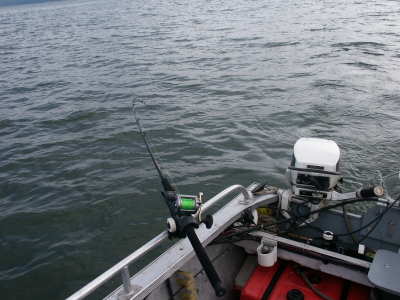 |
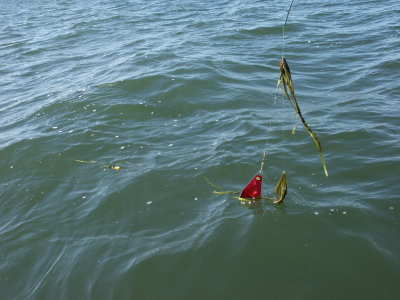 |
Bait : Most
fisherpersons use cut plug herring, & you might try the largest you can get (purple or black label). For cut plugging,
(or any method for that matter) soak the bait at least overnight & up to 4-5 days in 1 quart water, 2 cups rock salt
& 1/2 cup of powdered milk in a refrigerator. The rock salt toughens
while the powdered milk sets the scales. You can also add a few drops of
blue or green food coloring to replace that live iridescent color. In
addition you can even add some scent to this mixture. And inject the bait
with scent after it is rigged. One method is that after you cut the head
off, clean the entrals, & then make a slit in the rear belly cavity at the anis.
This slit will allow water to flow thru the bait, putting off more scent, &
allowing the bait to stay together longer.
For cut-plugging, some fishermen use a large toothpick or barbecue skewer just inside the skin, start outside
& forward of the hook exit hole. Push this back just inside the
skin the full length of the bait. Break it off slightly in front of the
herring. This stiffens & protects the bait & allows it to be
trolled longer.
Or my preferred method, is to use a smaller green label bait & then use a
herring bonnet. These bonnets will help to keep
the bait from being torn off when weeds attach it, and keep it fishing longer.
However don't stick exclusively with bait, as many fish can be caught
using lures. These lures can be about anything that a salmon has been
known to take when they enter the rivers, like large spinners, large Spi-N-Glo's, Coyote spoons, Kwik-Fish,
etc. Ocean fishing plugs like the Apex or Sting Kings can also be experimented with.
I like to have at least one of each, (bait & lures) in the water at the same
time, as explained in the following "Observances" section.
Drifting Eggs : The use of a large gob of salmon eggs near the bottom, drifting under a
large bobber is a method that can also be effective in some estuaries in the
upper reaches of tidewater. Here you try to locate a
hole that has fish stacked in it, which may well be non-biters. The
free-floating salmon eggs can prove effective in a situation like this.
Hooks : Tie your hooks, 4/0-5/0 or
up to 5/0-6/0 close, (3/4") between the bend & the
eye. When tying, the smaller hook is to the rear, allowing the larger hook
to be inserted into near the head area of the bait. Hook only the front hook into the bait, with the rear trailing.
Use 36" to 48" of 40# or 50# leader on the hooks as the water is
murky and a large Chinook, if hooked deep, can cut lighter leader with its teeth.
Observances : Troll with the tide if possible and slow (1.5+-mph).
At slack tide you can troll either way. Pull your line
OFTEN (like every 15 minutes) & clean any weeds off, check your bait, & re-inject
scent.
It
has been observed that they do not go with the deepest part of the bay or
shipping channel, but may travel on the edges of it. Most shipping
channels will be maintained at 40'. The fish will usually be found on the
shelf or edge of the channel in water from 12' to 25'. This is where
a GPS may come in handy, or if there are piling markers or buoys, take reference
on them & guide your fishing locations around them.
These fish, like most, will travel in certain paths. If
you stop & think, they are probably taking the route with the least current,
thereby making their progress easier. If there happens to be a secondary
channel away from the main channel that ties back into the main channel, do not
fail to look at this. This secondary channel will normally be off of a
bend & will have a lesser flow, but will make for easier fishing.
Another location I
have encountered is different however, in that there is a good sized hole in the channel,
& usually on the high incoming tide, the fish tend to hold up in this
hole. The fisherpersons will troll slow enough, or backtroll so that the bait simply
drops into the hole & slowly pushed thru the hole with the
tide. It is these peculiar locations that you need to learn & make
notes of. All the more reason to pick a area & fish it enough to
learn it instead of hopping around & never really know what or where you
should be fishing at.
It is a proven fact that fall salmon will move into the lower
reaches of an estuary & stay there until they are ready to move upriver for a
pre-spawn. They may drift back into salt water on the following outgoing
tide. They then may move back in again on succeeding tides.
This can happen numerous times before they move upriver or stay if there has
been no rain. So what you can have are some virgins to
the estuary, & some repeaters that are about ready to head farther
upriver. As they get ready to move upriver they tend to loose the
feeding instinct & will also loose their bright coloration.
It seems that most of these Chinook salmon tend to be close
to the bottom. One explanation, is that in these estuaries, where the
fresh water mixes with the salt water, since salt water is heavier, it will be
on the bottom. This puts the fresh water on top with a mid level mixture
of salinity in between. Since most of these fish are pretty fresh
out of the ocean, they apparently take a while to acclimate to the lesser
salinity of the upper bay/lower river. This puts the newcomers initially
in the deeper parts of the lower bay for a while. As they become more
accustomed to the fresh water, they then move upstream & therefore may be
found higher in the water column.
I have talked to a WDFW fish checker who relayed his
experiences at La Push checking the Quileute Indian nets.
He says that the Chinook will be within 1' of the lead-line or bottom, while the
Steelhead will be right on top at the float-line.
It is my theory that these first or second timers being the
brightest & freshest fish may be the ones take the bait. The
repeaters may have been conditioned into NOT taking bait the longer they are in
freshwater. These fish may be the ones who will possibly take a lure
more readily. And this lure can be a aggressive one like a spinner or plug
that they just hit as a defensive reaction. It therefore seems to be
prudent to have one each of both bait/lures in the water at the same time in
these
situations.
You can encounter MANY boats in close quarters in situations
like this. I counted 126 boats on the Willapa Bay between the
river marker #2 at Tokeland & marker #26 during the Tokeland Marina/Willapa
Gang's 2005 salmon derby on August 28th. I am sure there
may have been more that were out of sight. When this
happens, you have to be observant. You may not be able to troll
exactly where you want to go because of the other traffic close to
you. One constant problem is a troller setting at the rear, hand
steering his motor with his back to 1/2 of the boats usually never looks over
his shoulder at what is on his blind side. It seems to be no problem if at a slack tide that some of the
boats are trolling upriver & others are moving downriver. But when a
boat or two wants to zig-zag thru the parade, things can a little hectic,
especially when these boats are larger than the rest & think they have the
right of way. Remember, this is supposed to be fun.
More
Observances:
Every year I see many salmon lost close to the boats. Some fish
simply don't get hooked good enough to stay on, & it appears that here, there
is a surprising number that spit the hook before they get to the boat.
My observances can usually be split into about 3 mistakes which
cause this.
(1) Using inadequate tackle. This can be from too light &
limber a rod, too long a leader/distance between the sinker if inline & the
flasher creating a say 9' distance from the lure to the end of the mainline &
using an 8 1/2' rod. Then with the fish putting an arch in the rod, this
then lengthens the distance. This creates a problem of the fisherman not
being able to control the fish so the netter can do his job effectively.
(2) The netter being inexperienced in that they dip the net in the
water & expect the fish to simply swim into it. Or they make
numerous passes before the fish is tired & ready to be netted, spooking the fish
or knocking it off the hooks. And they many will NOT hold the net bag in
their off hand so it does not dip into the water, again spooking the fish.
Sometimes the netter, under special circumstances, may HAVE to net early IF the
hooks appear to not be a good hookup, but this takes experience & luck.
(3) This may be hard to prove, but it is my suspicion that faulty
hooks may come into play many times here. Either the design of the hook, or most
probably just DULL hooks. If the fish just spits the hook, most will
simply blame it on having to use the barbless hooks. While in reality the hook was
simply not sharp. Most experienced fishermen test the sharpness of the hook on their
thumbnail. If it slips & does not READILY dig in, use a hook file or
stone. In this category, could also be placed that the hooks may not have
been rigged properly if using herring for bait. Where do you place the
rear hook? The bait needs to "swim", not with a fast spin,
but rather a lazy roll is the preferred style. Here again will be your
personal preference.
Just because you use one method that works in your normal salmon fishing,
if you are not catching as many fish as others, ask them, & you may just get
told how they do it. Why go to all the effort to get your time on
the water, your boat ready & all the other things lined up, only to almost
totally ignore the one thing that WILL effect your catch percentage, that being your
condition & presentation of the bait.
(4) You may be putting yourself at a disadvantage if you DO NOT USE
BAIT here. OK, I have pulled fish on lures here, but if the numbers of
fish that are there on any given day are not that great, you may be
helping to stack the deck so that your fishbox will come up short by not using a
proven local bait.
Copyright © 2004-2006 LeeRoy Wisner All Rights Reserved
Originated 9-29-2002, Last Updated 09-20-2006
to
contact the author click here
|
